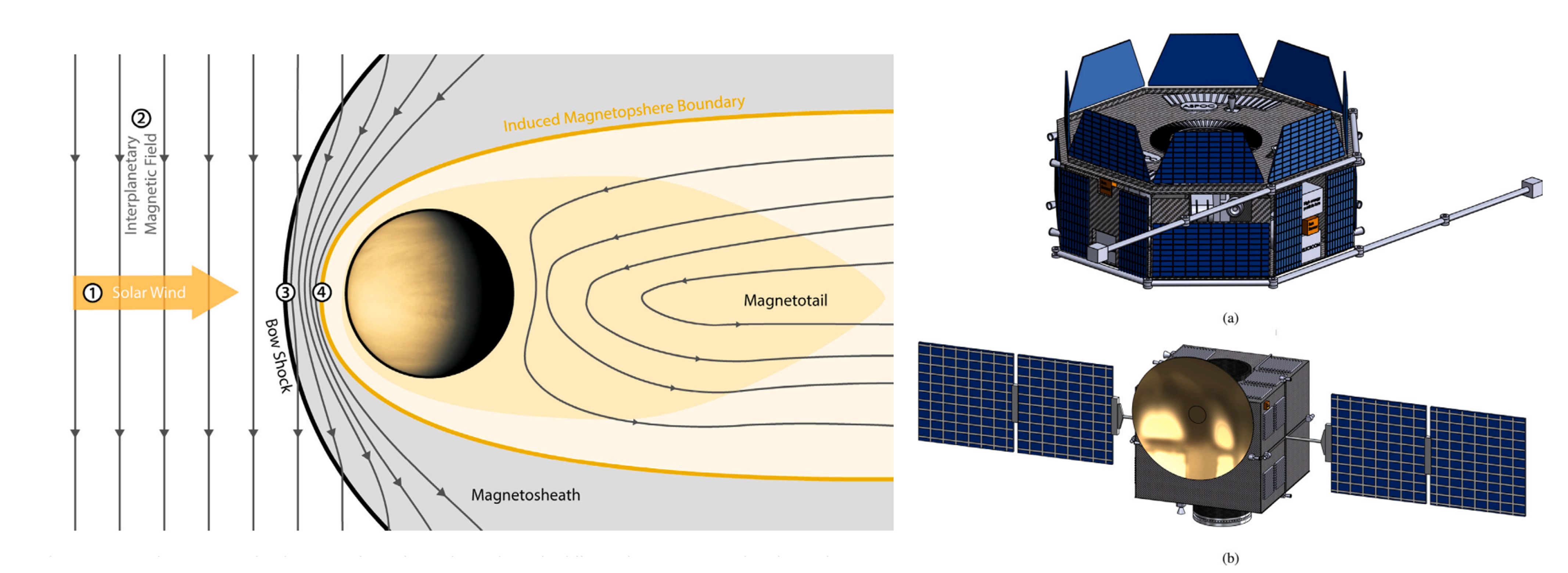
Magnetospheric Venus Space Explorers (MVSE) mission: A proposal for understanding the dynamics of induced magnetospheres
Alpbach Summer School 2022
European Space Agency Concurrent Engineering Academy 2022
Induced magnetospheres form around planetary bodies with atmospheres through the interaction of the solar wind with their ionosphere. Induced magnetospheres are highly dependent on the solar wind conditions and have only been studied with single spacecraft missions in the past. Without simultaneous measurements of solar wind variations and phenomena in the magnetosphere, establishing a link between both can only be done indirectly, using statistics over a large set of measurements. This gap in knowledge could be addressed by a multi-spacecraft plasma mission, optimized for studying global spatial and temporal variations in the magnetospheric system around Venus, which hosts the most prominent example of an induced magnetosphere in our solar system. The MVSE mission comprises four satellites, of which three are identical scientific spacecraft, carrying the same suite of instruments probing different regions of the induced magnetosphere and the solar wind simultaneously. The fourth spacecraft is the transfer vehicle which acts as a relay satellite for communications at Venus. In this way, changes in the solar wind conditions and extreme solar events can be observed, and their effects can be quantified as they propagate through the Venusian induced magnetosphere. Additionally, energy transfer in the Venusian induced magnetosphere can be investigated. The scientific payload includes instrumentation to measure the magnetic field, electric field, and ion–electron velocity distributions. This study presents the scientific motivation for the mission as well as requirements and the resulting mission design. Concretely, a mission timeline along with a complete spacecraft design, including mass, power, communication, propulsion and thermal budgets are given. This mission was initially conceived at the Alpbach Summer School 2022 and refined during a week-long study at ESA’s Concurrent Design Facility in Redu, Belgium.”
